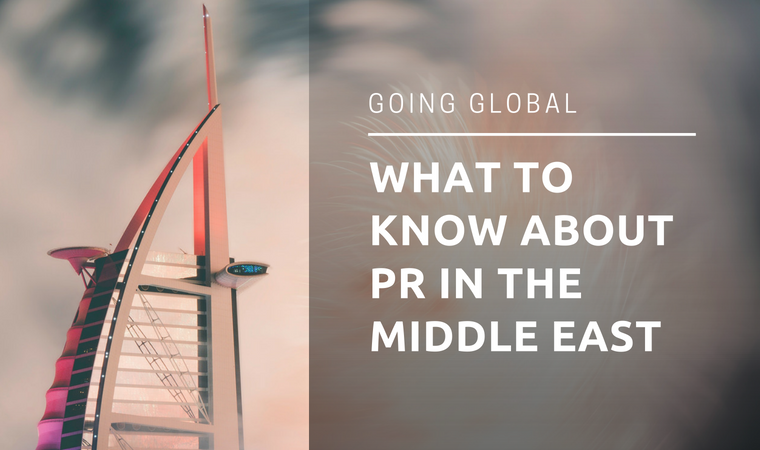Many years ago, I was a fresh college graduate with a plan. I would fly halfway across the world to a luxurious wonderland of opportunities called Dubai and away from the dread of looking for jobs with the heaps of fellow graduates. As a child of Lebanese immigrants, I had first-hand experience with the Arab world, but not on a professional level. Little did I know that taking a job in public relations would be the best path to learning how the region communicates, growing my skills and preparing myself to handle public relations across the globe.
Learning how public relations works in another part of the world can put your practice into perspective, offer alternative approaches to consider and assist you when dealing with international clients or markets.
Lost in Translation
The world now is integrated. We have global access to people, stories and brands. A lot of the brands I handled at my first job were globally recognized, high-end perfumes. We would receive press releases from the global headquarters in Europe that included words like “enticing” or “sexy,” among other similar adjectives.
Since the use of seductive words or images in the Gulf countries were restricted, I learned how to expand my vocabulary and use alternative descriptors. When bringing a global brand message to the Middle East, it is important to understand these cultural differences and consider if you should alter your messaging.
Do Your Homework
Any public relations professional does their research before distributing news. When distributing a press release on a pan-Arab level, I had to familiarize myself with the media in each country, as they all function under different governments and economies.
For example, censorship in Lebanon was not strict, and Qatar had a smaller media community, with less content and flexible deadlines. Saudi Arabia was the largest distributor, making it the top target market, so extra measures on censorship needed to be taken.
Although the U.S. functions under one flag, meticulous research of the same kind needs to be done with regards to regions, different types of publications, relevance and approach to local verses national publications.
Managing Media
Dubai was filled with expatriates from countries across the globe and throughout the Middle East. Because of this, there were two media lists created for each project, one for the English and one for the Arabic language publications.
The English language publications who had a more internationally recognized title function much like publications in the U.S. Editorial calendars are released ahead of time, spaces are booked months in advance and the editors do not exercise leniency. There was also less space allotted for local sources, since a lot of the content was syndicated from their international counterparts.
The English language publications who were locally owned and the Arabic language publications were more lenient with content and deadlines. They were more likely to publish promotional content, oftentimes including the press release as is, so making sure releases are well written and informative enhances coverage value.
When it comes to media outreach, the Arabic media require a more personal approach. Coffee dates, a visit to their offices and gifts were common practices.
Changing Tides
Through my experience, I learned that public relations is an industry shaped by different forms of communication styles that are constantly changing. Being flexible, doing your research and developing your communications skills—whether through personal relationships or writing—are all important elements to tackling public relations successfully, wherever you may be and whoever you may be working with.
Curious for more insights into public relations on a global scale? Learn about PR in Germany here.
